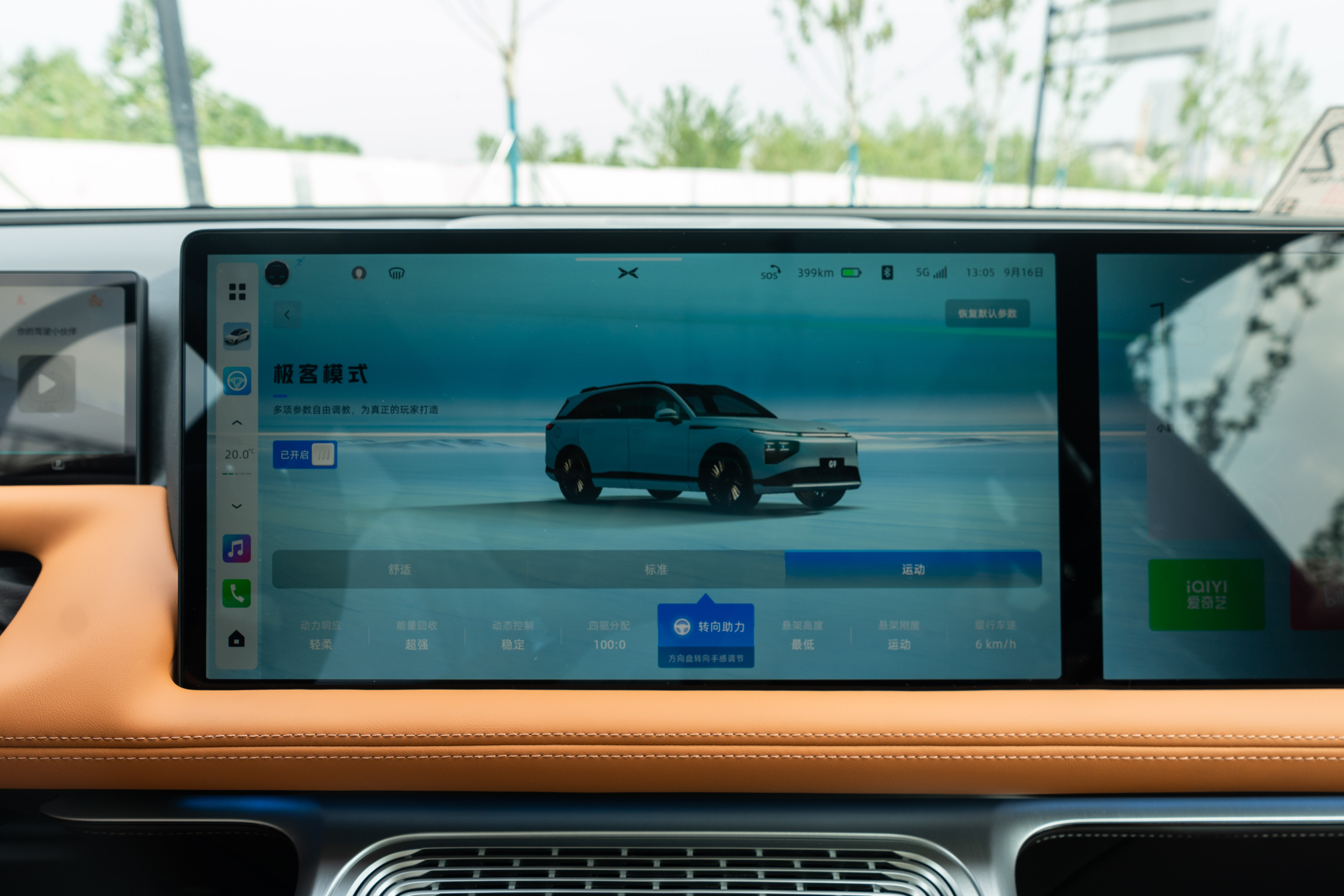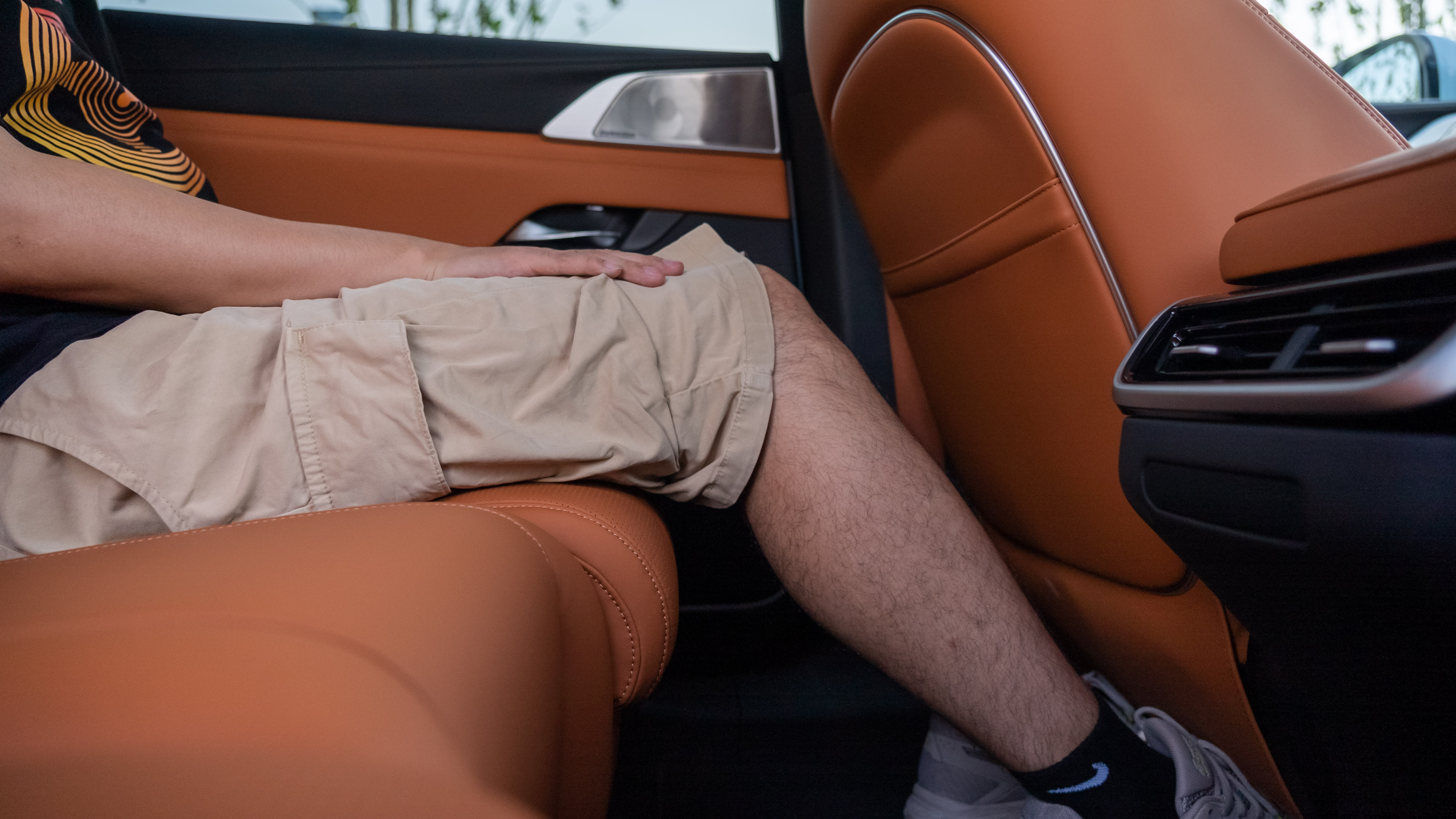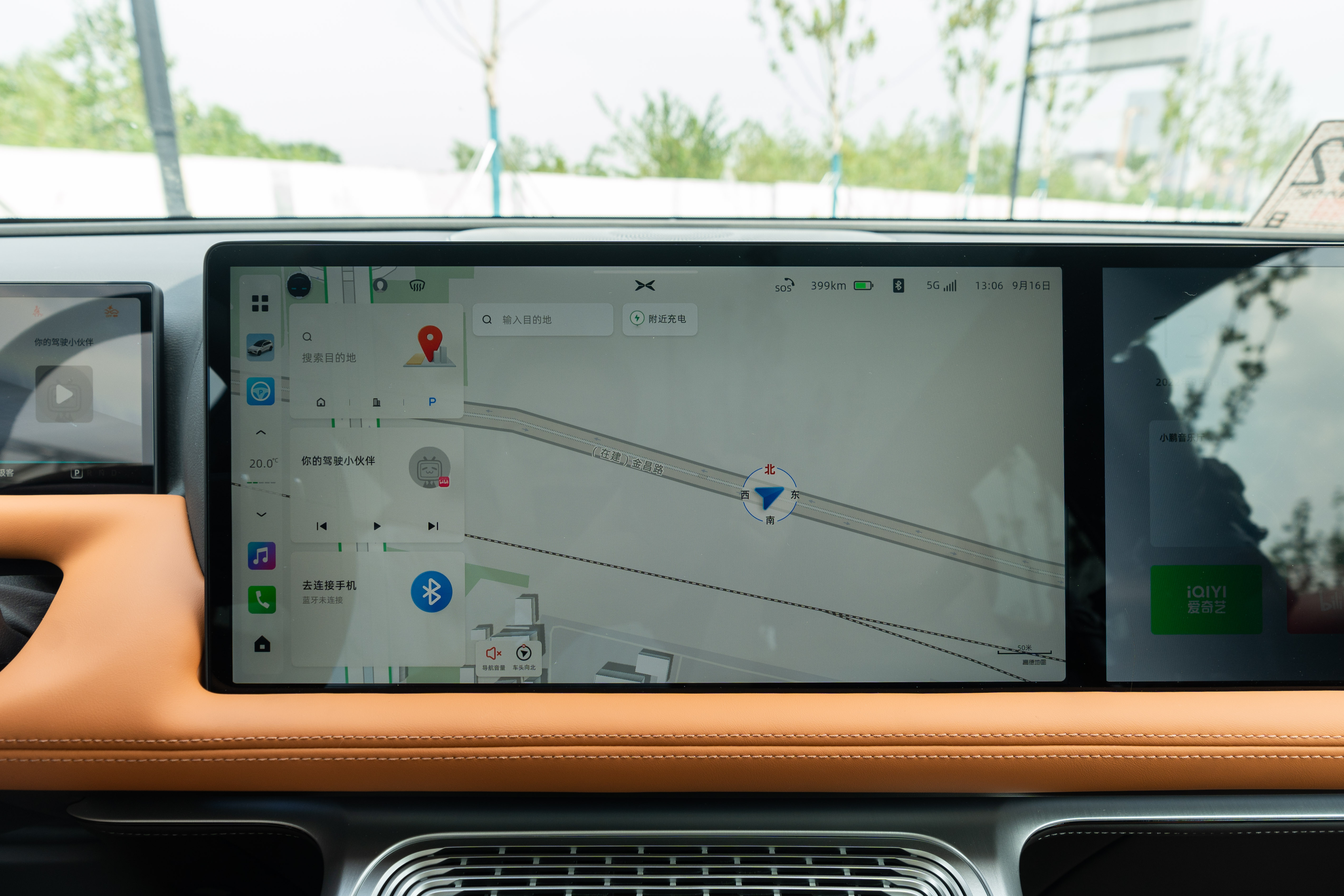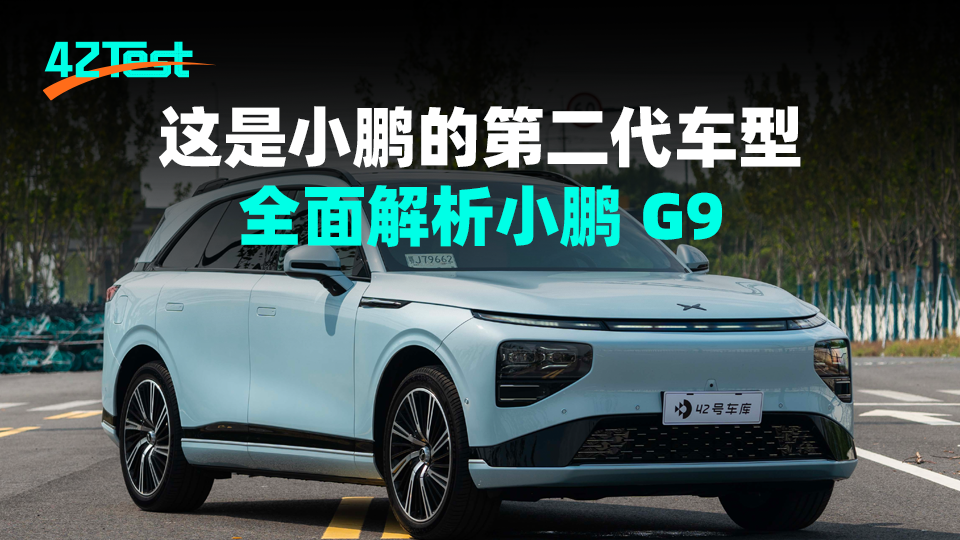Since the official appearance of XPeng G9 at the Guangzhou Auto Show last year, to the release of its interior in August 10 this year, and to its official launch today, it has been 10 months.
Tonight, the brand-new flagship G9 of XPeng has finally arrived. Let’s first take a look at the prices:
- 570 G: 309,900 yuan
- 570 E: 329,900 yuan
- 702 E: 349,900 yuan
- 650 E Performance Edition: 399,900 yuan
- 650 X Performance Edition: 449,900 yuan
- 650 X Launch Anniversary Edition: 469,900 yuan
At the same time, there are three optional packages:
- 5D Music Cabin: 22,000 yuan
- XNGP Advanced Driving Assistance: 28,000 yuan
- 4C Ultra Fast Charging Battery Pack: 10,000 yuan
As the flagship model of the three major new forces, which was the first to be unveiled and the last to be launched, XPeng G9 has given us too many expectations and waiting.
As a long-awaited product, XPeng G9 has taken on the brand’s upward vision in cabin, advanced driving assistance, driving quality, and various dimensions, using XPeng’s best technology. It will become XPeng’s new benchmark.
Before the official launch, we got hold of the engineering prototype of the XPeng G9 dual-motor 650 X version and conducted a comprehensive and in-depth experience. This article will comprehensively cover the exterior, interior, driving experience, endurance, charging speed, and other dimensions. Earlier contents about G9 can be found through the links listed below:
- From 7 to 9, how does XPeng redefine its flagship? | G9 Static Experience
- What is the 5D Cabin? What surprises does XPeng G9 have? | Interior Interpretation
- XPeng G9 aims to compete in the global market, where does its confidence come from?
- New Car Release at 2021 Guangzhou Auto Show: XPeng G9 Officially Unveiled (with live photos)
- 【Guangzhou Auto Show】Peng friends, you’ve been waiting! This is the surprise!
- Static Experience of XPeng G9: How come this cinema has four wheels?
Driving Experience: The best model XPeng has ever made!
The appearance and interior of the XPeng G9 were unveiled very early on. So, like users, we are very curious about how the car performs.
At the beginning of this article, I want to give users who are interested in this car an answer: G9 is currently the best driving model of XPeng, bar none. At the same time, due to the fact that G9 is an engineering sample car, it does not fully demonstrate the ultimate performance of the Double-Chamber Air Suspension.
What is the use of the Double-Chamber Air Suspension?

On the XPeng G9 Performance version with dual motors, the Double-Chamber Air Suspension has become a highly anticipated feature, which directly affects the driving experience.
From the parameters of the suspension itself, the stiffness (height and softness/hardness of the suspension) and damping (resistance to support) of the suspension are usually classified:
- Passive suspension, as the name suggests, has fixed stiffness and damping that cannot be adjusted;
- Semi-active suspension, the stiffness cannot be adjusted, but the damping can be adjusted. For example, the CDC electromagnetic suspension we often hear about belongs to this category;
- Active suspension: both stiffness and damping can be adjusted. This type of suspension usually requires air springs to adjust the stiffness and electromagnetic shock absorbers to adjust the damping.

The Double-Chamber Air Suspension on the G9 is also equipped with the CDC suspension and belongs to an authentic active suspension.
From the air spring chamber of the air suspension, air suspension is divided into single-chamber, double-chamber, and even triple-chamber suspension. Before the G9, models of this level at most used single-chamber air suspension, such as the Landtu FREE, Zeekr 001, Ideal L9, NIO ES7, and so on. The configuration of the Double-Chamber Air Suspension generally rises to luxury fuel-powered models such as the Porsche Cayenne and new Macan.
From a theoretical perspective, air suspension adds air to a flexible chamber. Since air can be compressed, it creates a different sensation when driving compared to a metal coil spring.
However, due to restrictions on the chamber size of single-chamber air suspension, the range of stiffness adjustment is limited. The addition of double chambers allows the entire range of stiffness adjustment to become larger.What better experience will the dual-chamber suspension of the XPeng G9 bring to customers?


In addition to the texture difference from the metal coil springs mentioned earlier, the range of adjustment for the G9 air suspension can reach 100 mm (ideal L9 is 80 mm, NIO ES7 is 90 mm), which is particularly prominent in actual perception. The change in the vehicle’s ground clearance also changes the posture of the entire car, and when the suspension is at its lowest point, it even gives a sense of a wagon.



We also found that the change in suspension height is basically consistent with the official claim after actual measurement.

In the geek mode, we can see that there are 5 gears of setting adjustment from the lowest to the highest suspension height.
Finally, regarding NVH, due to the change from metal springs to air suspension for the connection between the suspension and the body, the air suspension is beneficial for creating the NVH inside the car.

Although the G9 uses single-layer glass, NVH is a system engineering, and this will not be the deciding factor for the entire system.
Of course, this G9 from Michelin PILOT SPORT EV has also made a contribution. During these days of test driving, as long as it is a smooth and complete asphalt road, under the speed limit, I can hardly perceive tire noise entering the car. Its excellent NVH performance is definitely a potential advantage of the G9.
Having talked about the advantages of this double-chamber air suspension, let’s take a look at its shortcomings.
Firstly, the adjustment speed of this suspension is relatively slow, and secondly, the entire adjustment process has no reminder, so we don’t know if the vehicle has completed the lifting and lowering action. It is recommended that OTA can add a real-time suspension status display icon on the instrument panel or remind through sound in the later stage.
Double-chamber air suspension is definitely a hardware equipment that adds a lot of bonus points to the vehicle. However, how to use this suspension well essentially depends on the manufacturer’s tuning skills. It is somewhat regrettable that in the G9 test car we drove, it did not perform as well as it should have.
In the standard driving mode, the suspension feel is very good on flat asphalt roads. It can resolve almost all fine vibrations into very subtle frequencies, and there is a strong suspension support when turning, as well as excellent NVH performance, which gave me a great surprise.
However, all this comes to a halt when the vehicle passes over speed bumps. I originally imagined that it should be able to resolve it crisply, but in actual fact, the front suspension rebounds very directly, and there are still residual waves in the rear suspension.
We originally expected that in the standard mode, the overall suspension would be softer, and it could better resolve the vibrations caused by obstacles such as seams and speed bumps. However, the feedback of the suspension in the current standard mode is more like the sport mode.
Interestingly, we had the opportunity to briefly experience the rear-wheel-drive single-motor version of the G9 without double-chamber air suspension. In terms of pure mechanical level, this car basically meets our requirements for the standard mode, and it can filter out most of the vibrations softly, and there will not be hard feedback at seams and speed bumps.

The steering feel of the G9 has greatly improved compared to the P7.
First of all, the entire steering wheel integrates the advantages of the P5 and P7, adding a concave design at the three and nine o’clock positions, which can better hold the thumb. Secondly, the linearity degree of the steering wheel and the response of the vehicle’s front end have made significant progress compared with the P7.
The throttle and brake of G9 have made noticeable improvements in linear response compared to P7. However, the brake pedal still feels soft and the damping of the brake hardly changes under different modes.

During our test drive, we always set the kinetic energy recovery system of G9 to the maximum level, and the recovered power could often reach 140 kW, 150 kW, or even as high as 224 kW, making it the vehicle with the highest recovered power among all the models we have driven.
7 Driving Modes

Beyond the normal standard, comfort, eco, sport, and off-road modes, G9 offers two additional driving modes, “Chasing Light” and “Geek”, providing a total of seven driving mode options.
The “Chasing Light” mode is more aggressive than the sport mode, allowing the full release of power. Meanwhile, the “Geek” mode puts all driving attributes of the vehicle, including power, kinetic energy recovery, ESC status, power distribution, steering feel, suspension height and stiffness, and crawling status under the control of the user.








Due to the diverse settings here, during my test drive over these few days, I personally recommend the combination of light power, super-strong energy recovery, stable dynamic control, 50:50 four-wheel drive distribution, comfortable power steering, lowest suspension height, comfortable suspension stiffness, and enabled stop-start mode in the geek mode.
What’s interesting is that the G9’s energy recovery in normal mode can be set to one-pedal mode, but it still cannot stop the car, and ultimately the vehicle will continue to travel at a speed of 2-3 km/h.
However, in the geek mode, we can adjust the creeping speed to 0 km/h, and the vehicle will enter AutoHold mode and come to a stop.
Acceleration & Braking Performance
This XPeng G9 twin-motor 650X engineering demo car has a front motor of 175 kW asynchronous AC motor and a rear motor of 230 kW permanent magnet synchronous motor, with a total power of 405 kW and a peak torque of 717 N·m.

The official claimed that the 0-100 km/h acceleration of this car can reach 3.9 seconds. We also repeatedly tested this car more than ten times in a closed field, with the following results.

At the time, the ambient temperature was 29℃, and the vehicle’s battery level was still 76%. We turned on the chase mode and fully released the vehicle’s power.“`

When two people sit in the front seats of the vehicle, the acceleration of the car hovers around 4.1-4.2 s, while in single-person tests, the car’s acceleration stabilizes at 4.0 s, and even entered the range of 3 s in the ninth test.
Charging: The Wonders of 800 V
Another selling point of the XPeng G9 is its 800 V electrical architecture and SiC power module. We tested the standard 3C version of the car, and the most powerful feeling this configuration gives for daily use is the extremely fast charging speed. We specifically tested it against both XPeng’s S2 180 kW supercharger station and a regular 120 kW charger.


At the 120 kW charger of Xiaojuben, with no vehicle diverting, the G9 completely consumed the power at the terminal of the charger before reaching 75% charge. Finally, it took 53 minutes to charge from 5% to 95% SoC.


Since there is currently no S4 supercharger station in Shanghai, we went to the S2 supercharger station. It can be seen that in the early stages of charging, the power is climbing slowly, because the battery charge is too low and the voltage is difficult to build up. Therefore, the peak of 170 kW was not reached until the battery level reached 70%.
For users of the XPeng G9, whether using a regular third-party 120 kW charging station or their own S2 charging station, the charging speed brings a very obvious improvement in experience if there is no diversion, allowing a nearly 80% increase in the battery level in just 30 minutes.
“`
To obtain faster charging experience, it is essential to massively promote the construction of self-operated charging stations. Currently, XPeng Motors has over 1,000 self-operated charging stations covering all municipalities and prefecture-level administrative regions in China. However, the stations for S2 and S4 models need to be densely arranged.
The plug-and-charge experience and the dense charging stations are highly attractive to users.
Range: 4WD version tested to have a high-speed real range of 460 km!
The battery of G9 is divided into two versions, 78 kWh lithium iron phosphate and 98 kWh ternary lithium battery. The official stated range of this dual-motor version is 650 km according to CLTC test.
We conducted 42Test range test on G9, including high-speed and city road conditions. The range performance of this car is impressive.

Under high-speed conditions, we drove at the limited speed of the road and achieved an average speed of 105 km/h, with an actual range of 460 km. After the test, the remaining range was not displayed on the dashboard. Based on the experience of XPeng P7, the remaining range will not be displayed when the range falls below 20 km, so it is estimated that there are still about 18 km of range left for G9.
According to the calculation based on the final performance of 19.3 kWh/100 km, this car can theoretically travel over 500 km.


Our city test is divided into two parts, 100 km of outer ring expressway and 50 km of city streets. During the test on Shanghai outer ring expressway, we encountered heavy traffic, and it took nearly 3 hours to complete the distance of 100 km at an average speed of only 39 km/h.Due to the extremely congested route, we even resorted to “reverse virtual marking”. The vehicle traveled only 1.2 km, but according to WLTP standards, it only lost 1 km of total range.

In cities with many traffic lights on the ground, the performance of the G9 is not as good as that of the outer ring. The average speed has increased to 58 km/h, and the actual range that can be covered per 1 km according to WLTP standards will lose 1.16 km.
For a large five-seater SUV that weighs 2.3 tons and can accelerate to 100 km/h in less than 3 seconds, the G9’s high-speed range can reach more than 460 km, which is indeed quite impressive.
Elegant Exterior Design
From 7 to 9, how did XPeng redefine its flagship?|G9 static experience
XPeng G9 static experience: How did this cinema have 4 wheels?

XPeng G9 has been officially unveiled for a long time, and the review from 63 is “exquisite” and “coordinated”, while my review is “elegant”.
The length, width and height of XPeng G9 are 4,891 x 1,937 x 1,680 mm (the optional air suspension can increase the height to 1,670 mm), and the wheelbase is 2,998 mm.
The exterior design continues the family-style front face of P7, P5, and G3i. Even if you see only the front of the car or the headlights from a long distance, you can clearly distinguish it as a XPeng car.

Of course, the distinctive and continued design style not only enhances the recognition of the model, but also enhances user impression. However, on the G9, this “X-BOT FACE” design style and through-type lightsaber headlights have been upgraded again.
 # XIAOPENG P9: Improvements in lighting, wheel design and interior space
# XIAOPENG P9: Improvements in lighting, wheel design and interior space
On both sides of the through-type daytime running lights in the headlamps, four light bars have been added to the high and low beam positions, which are officially referred to as “X-BOT FACE Pengyi Light”.

Below the headlamps is the G9’s LIDAR. In terms of location, it is basically the same as that on the XPeng P5, and the biggest advantage of placing it here is that it does not affect the overall design of the vehicle. At the same time, the entire LIDAR is recessed into the curved surface of this area, which can reduce a certain amount of collision threat.

The wheels of this version feature a multi-spoke design with a concave center and the XPeng logo added to the surface, giving it a more high-end look.

The rear of the car is not designed to be narrowed, giving it a more square appearance. The biggest advantage of this design compromise is that it offers plenty of headroom in the second row and space in the trunk.
How is the space?
For a large five-seater SUV, space is a major concern for most people.
The test rider is 179cm tall and weighs 73kg. After adjusting the front seat to the best driving position, there is still over two fists’ worth of headroom left.

Maintaining the same driving position in the front row, the headroom in the second row is similar to that in the front row, and the backrest angle of the seat can be adjusted using the buttons on the door panel for a more comfortable recline. However, the legroom performance is more moderate, at about two fists.


The back seat not only supports backrest adjustment, but also has the possibility to adjust sliding distance, enhancing the supportability of thighs.


We also measured the space of the second row seats and trunk of the vehicle.

Unexpected Design Details in the Interior
What is a 5D cabin? What surprises does the final version of the Xpeng G9 offer? | Interior review
The interior of the G9 doesn’t actually give us the feeling of being stunners, as we’ve already seen the eye-catching large screen in the L9 by Ideal. Putting aside the hardware and UI of the car computer itself, the G9 surprised us in its choice of materials for the interior design.
Let’s first review the three-screen car computer of the G9:
-
Instrument panel, 10.25 inches in size, with a resolution of 1920*720;
-
Central control screen, 14.96 inches in size, with a resolution of 2400*1200;
-
Co-pilot screen, 14.96 inches in size, with a resolution of 2400*1200.

In terms of UI, the overall layout is similar to that of the P7, with the map being the default desktop for the car computer, a fixed Dock bar on the left with six icons containing the most commonly used functions during driving, and the center setting for the air conditioning control.
 The layout of the passenger side screen is basically the same as the central control screen’s, except that the main menu interface displays mainly audio and video entertainment.
The layout of the passenger side screen is basically the same as the central control screen’s, except that the main menu interface displays mainly audio and video entertainment.

During mode switching, there is linkage animation between the central control screen and the passenger side screen.

G9 adopts velvet material in the central armrest box of the dual-opening door, with an exquisite fragrance plugin in the front and an air outlet that can be opened and closed in the back. It can be used to cool drinks in summer, and is a simplified version of a mini refrigerator.

G9 uses genuine leather on the three door handles throughout the whole car.

XPeng claims that 95\% of the car’s interior decoration uses soft materials, but hard plastic is used on the inner side of the door handle buckle, which is touched almost every time the car is exited.

However, the large amount of piano painted materials in the front row is still prone to fingerprint contamination and needs to be wiped frequently.


 G9 has 20 ambient lights with 7 dual-color combinations and 4 modes (fixed brightness, smooth breathing, following car speed, and music rhythm) to choose from.
G9 has 20 ambient lights with 7 dual-color combinations and 4 modes (fixed brightness, smooth breathing, following car speed, and music rhythm) to choose from.
In Conclusion

As the flagship of XPeng’s upward expansion, G9 is equipped with XPeng’s best technology and hardware, such as dual-chamber air suspension, 800V platform SiC power module, self-developed motor, and 5D Xopera Music Hall.
The six configurations of XPeng G9 released this time show that although it is an upward breakthrough, compared with P7’s emphasis on technology and intelligence, we see more efforts and investment in traditional projects.
In actual experience, this car is quite outstanding in terms of power and range within this price range. The driving sensation, exterior design, and interior materials are also very balanced.
G9 strives to meet the needs of more people from various configurations. For friends who are confused about G9 versions and configurations, you can click on this article: Is XPeng G9 expensive at 309,900 to 469,900 RMB?
This article is a translation by ChatGPT of a Chinese report from 42HOW. If you have any questions about it, please email bd@42how.com.
